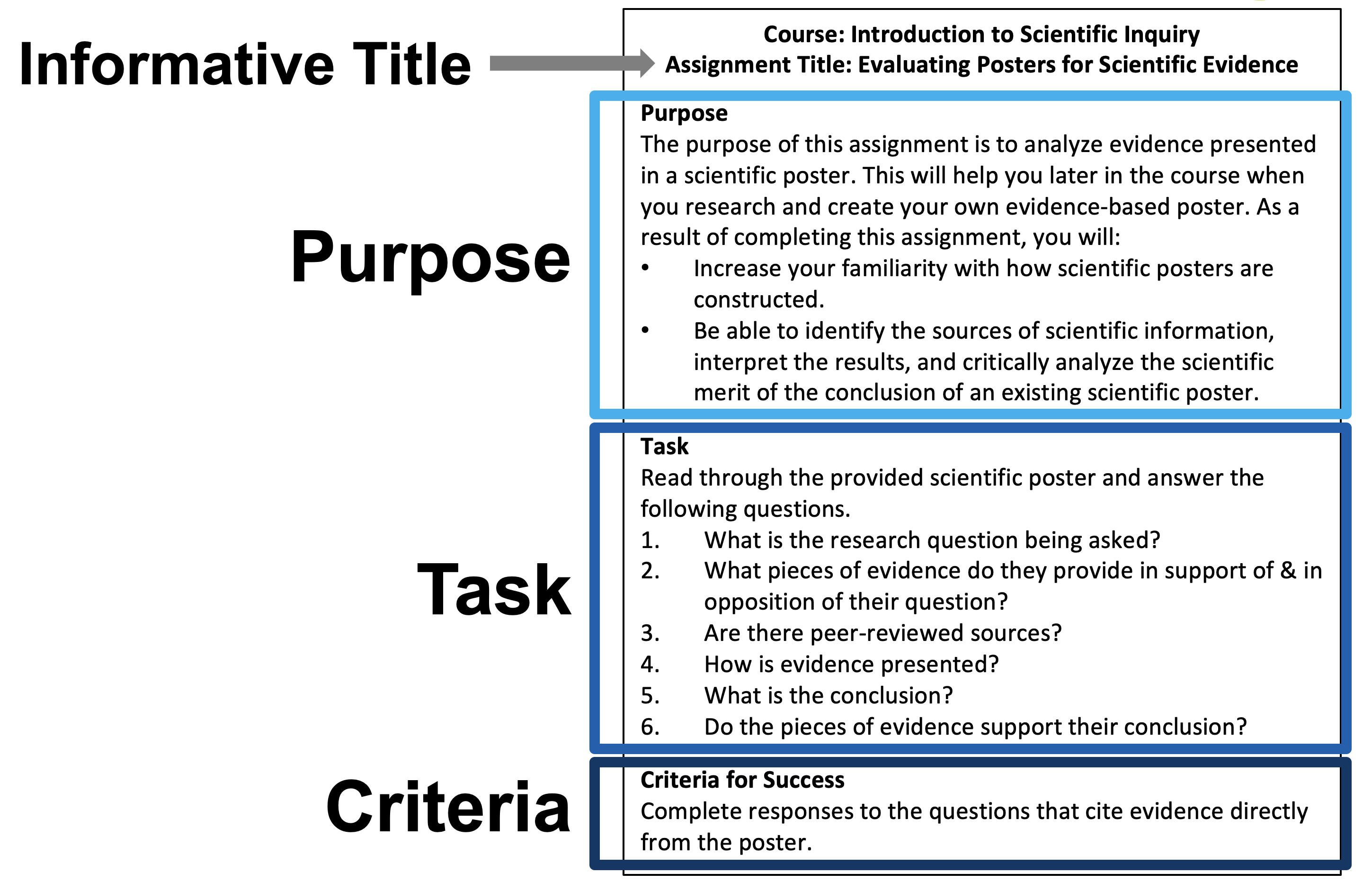When we communicate how and why students are learning course content in certain ways, we are being transparent about the methods we use for teaching and learning. The goal of Transparent Assignment Design is to “to make learning processes explicit and equally accessible for all students” (Winkelmes et al., 2019, p. 1). This involves sharing three critical pieces of information with students:
Purpose: Describe why students are completing an assignment and what knowledge and skills they will gain from this experience. Additionally, explain how this knowledge and skill set are relevant and will help the students in the future.
Task: Explain the steps students will take to complete the assignment.
Criteria and Examples: Show the students what successful submissions look like (e.g., provide a checklist or rubric and real-world examples).
The figure below illustrates an example of an assignment that has incorporated Transparent Assignment Design.

Additional examples in a variety of disciplines can be found on the TILT Higher Ed website.
Providing a full picture of a specific assignment, complete with the purpose, task, and criteria and examples, can equip students to do their best work. Research shows that Transparent Assignment Design benefits learning for all students, but it is especially beneficial to students in traditionally underrepresented groups, such as those who are non-white, low-income, first-generation, or struggling with general college success. In a 2014-2016 Association of American Colleges & Universities study, students self-reported an increase in academic confidence, sense of belonging, and acquisition of employer-valued skills in courses that were considered more transparent (Winkelmes et al., 2016).
CATLR Tips:
- Start with an informative title! The title should give students a preview of the purpose of the assignment. For example, an assignment title such as “Scientific Evidence” can be renamed “Evaluating Posters for Scientific Evidence.”
- Indicate the due date (date and time, including time zone) and how the students should submit (e.g., through the Assignments section on Canvas).
- Prior to distributing an assignment to students, ask a colleague to review it. Specifically, ask if they can identify the purpose, task, and criteria.
- Provide multiple examples that illustrate successful submissions in order to avoid students thinking there is one “correct” way to complete the assignment.
References:
Transparency in Learning and Teaching (TILT) Higher Ed. (n.d.). TILT higher ed examples and resources. https://tilthighered.com/tiltexamplesandresources
Winkelmes, M. A., Bernacki, M., Butler, J., Zochowski, M., Golanics, J., & Weavil, K. H. (2016). A teaching intervention that increases underserved college students’ success. Peer Review, 18(1/2), 31-36.
Winkelmes, M. A., Boye, A., & Tapp, S. (2019). Transparent design in higher education teaching and leadership: A guide to implementing the transparency framework institution-wide to improve learning and retention. Sterling, VA: Stylus Publishing.
